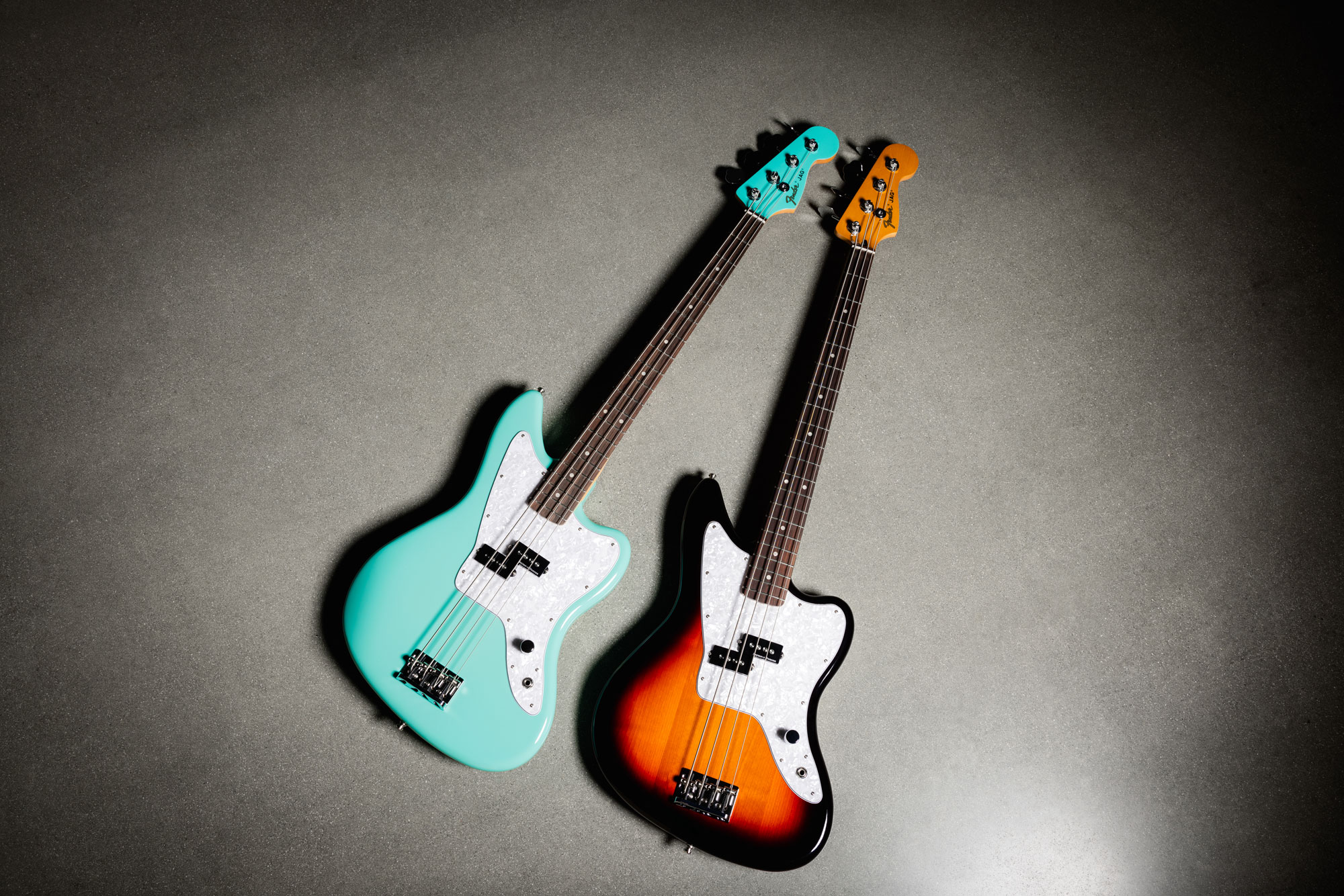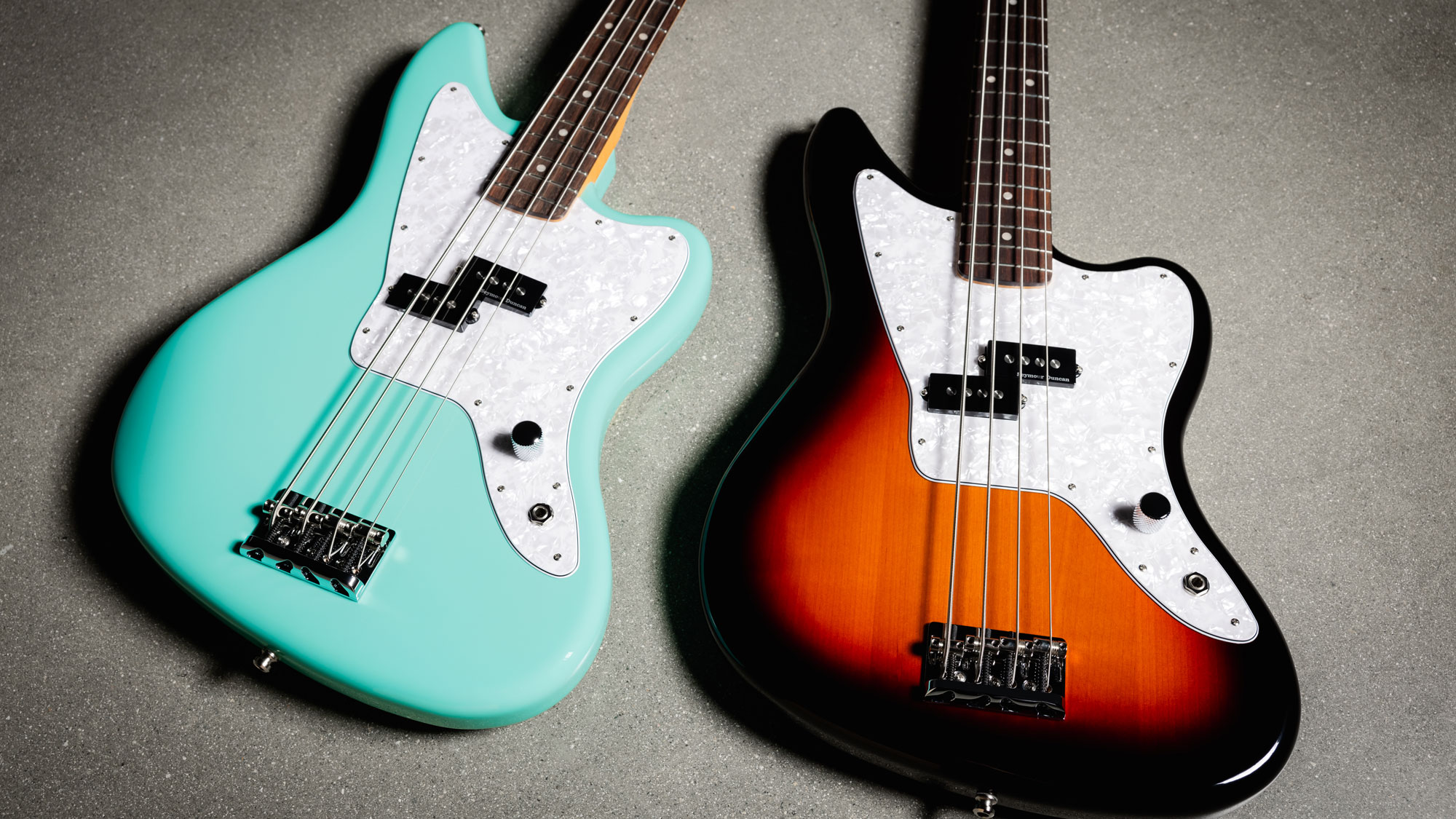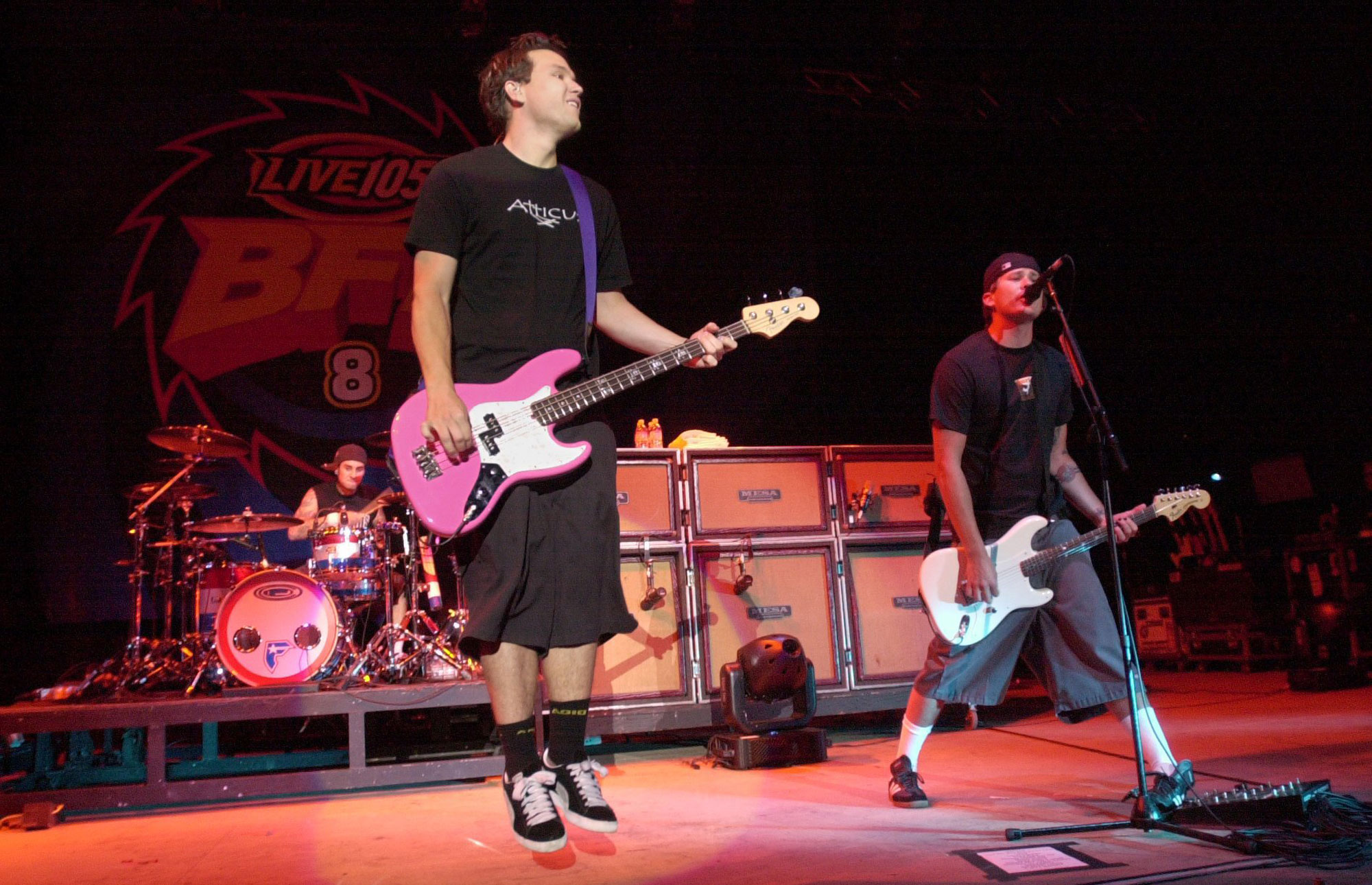
Mark Hoppus doesn’t do a lot of interviews. And he definitely doesn’t do a lot of interviews about bass.
But the blink-182 bassist, co-frontman and sole consistent member has a lot to say in that regard. His tone – produced by reversing the classic P-Bass split-coil configuration – is about as perfect as pop-punk rumble gets, while his basslines are hooky and deceptively deep, incorporating chunky chords and neat passing lines.
With the return of fellow founding member Tom DeLonge in 2022, blink has been riding a wave that’s as big as anything in their Warped Tour-headlining heyday, with sold-out arena tours across the globe. And it’s not pure nostalgia, either – the band released new album, One More Time…, last year, and an expanded edition followed last month.
With the rekindled friendships, monster tours and smash albums comes fresh instruments. And while DeLonge grabbed the guitar headlines with his single-pickup Fender Starcaster, his bandmate has his own eagerly awaited signature model, the Fender Limited Edition Mark Hoppus Jaguar Bass.
These are the exact models the bassist has been using live, having switched to the offset body shape to match Matt Skiba’s Jaguar guitars during his tenure with the group. But Hoppus has stuck with the outline upon DeLonge’s return, equipping it with his signature flipped Seymour Duncan Quarter Pound pickups and a Jazz Bass neck.
Other highlights include a single volume knob and a neat Hi My Name Is Mark octopus logo on the neck plate. And don’t even get us started about the matching headstock on the Sea Foam Green-finished model. We want one, and we want one now.

When Fender let us in on the deets, they disclosed that Hoppus would be willing to answer some questions via email, exclusively for Bass Player/Guitar World.
And boy, did we have questions: why the Jazz Bass neck? How did bass chords become your trademark? And when you record guitar, what are you using?
What follows is our complete Q&A with Mark Hoppus.
Hi Mark, my name is Mike. Let’s start at the beginning: what are your earliest memories of playing bass? And what made you want to pick it up in the first place?
“I saw the music video for the Cure’s Just Like Heaven and knew right then that bass was the instrument I wanted to play. I had to paint my stepmom’s condo to earn the money.
“Dad took me to a local music shop and I bought the first bass I saw on the wall [a black Mako P-Bass]. I took it home and practiced playing along to all my favorite songs.”
What was the first moment where you felt you had found your ‘sound’ on bass?
“By the time we recorded Take Off Your Pants and Jacket, [producer] Jerry Finn and I had refined the tone to what I’ve tried to stick with ever since. Boosted mids, punchy bass, roll off a bit of the treble.”
You played Ernie Ball basses in blink’s earlier days – what made you switch to Fender, and why have you stuck with them all this time?
“During the Enema of the State recording, I wanted to get a different tone on some of the songs. Jerry Finn and I left the studio and drove to a Guitar Center nearby, ran in just before closing and bought a Fender P-Bass, took it back to the studio and cut one track with it. Then another… then we re-tracked almost every song with it. Just a random P-Bass from Guitar Center. Fender has always been my dream bass.”
Your signature models are famed for their reversed pickups. What inspired you to flip them around?
“The E and A strings sounded a bit wooly compared to the D and G strings, which sounded doinky. Inverting the pickups puts the one under the E and A strings closer to the bridge, which gives them a bit more bite and punch, while the pickup under the D and G strings is closer to the neck, allowing it to catch more of the swing in those strings, giving them a bit deeper, fuller tone. It gives a more even tone across the four strings.”

Your previous Fender signature bass featured a P-Bass neck. Your latest has a Jazz Bass neck – what do you prefer about the Jazz neck these days?
“I think it started by accident. One of my basses got built with a thinner neck, and I liked the way it felt and played. Playing a standard P-Bass neck is like playing a baseball bat to me now. Still love them, but the Jazz neck is where I am today.”
Of all the basses you have played throughout your career, is there one that means more to you than the rest?
“Pinky. It’s a customized bass with skulls inlaid in the fretboard. The Fender Custom Shop found this old forgotten hot pink paint in the back of their shop and went to town on it. That was more than 20 years ago. It’s been to hell and back. Toured, dropped, played, loved. It has a crack in the body now, so he’s been taken out of the touring rotation but it’s still probably my favorite bass.”

There’s an entire community of fans who obsess over your bass tone – what do you make of the fervor surrounding your sound?
“My tone rules! It cuts through without being clanky, has a great low-end, isn’t brash or sizzly. Just a great rock tone. When I do noodly bits on the high strings it sounds full and when I’m deep in the track keeping the rhythm and melody going, it fits right in the pocket.”
You’re using Kempers onstage now with blink. Why did you make the switch, and what advantages does it offer you?
“I used Kempers for years and recently switched to a Neural Quad Cortex. Once the modelers caught up to tube amps in their tone, it was all over for me.
“We were in Conway Studios in LA tracking, with my full cabinet/head setup on one channel and my Kemper tone on another channel, and no-one in the room could tell the difference between the two.
“At that point, why pay to freight hundreds of pounds of gear around the world? My whole live rig fits in one rack now.”
Who are your bass heroes?
“Simon Gallup from the Cure, Tony Lombardo from Descendents.”
Chords are a trademark of your bass parts – can you remember a particular moment where you first started exploring that style?
“The first time I heard [cult English rock band] Ned’s Atomic Dustbin, who had two bass players – one sticking to the root notes, and another playing the high strings doing chords – it blew my mind. For me, it all started there.”
You’ve played guitar on blink records, too – are there any standout parts that you recorded, and what guitars did you use?
“I tracked about half the guitars on [2011’s] Neighborhoods using my Tele Jr, which rules. I think it was made in ’92. Jerry Finn told me to buy it and I haven’t regretted it once. [Editor’s note: the dual-P-90 Telecaster Junior was a favorite of Finn’s, and rumored to have featured heavily on several classic blink-182 recordings, including Enema of the State.]”
What’s the bassline you’re most proud of in blink?
“Carousel’s intro I love. It was a mistake I made while trying to learn [Beethoven banger] Für Elise, and I liked how it sounded so I kept it. The first day I met Tom I showed him that bassline and he’d been working on something similar on guitar. It was the first song we wrote together and we still play it today.”
What’s the hardest blink song to play on bass?
“The intro to Carousel. I still fuck it up all the time.”
12 years ago, you delivered a lecture called Bassists Look Too Bored, in a bid to inspire bass players to move more on stage. Have you seen any improvement over the past decade?
“We just toured with Pierce the Veil and their bassist Jaime [Preciado] goes nuts onstage like no-one I've seen before. At Lollapalooza, he jumped into his amps like Kurt Cobain jumping into Dave Grohl’s drum kit.”
For more information on the Limited Edition Mark Hoppus Jaguar Bass, head to Fender.com.







